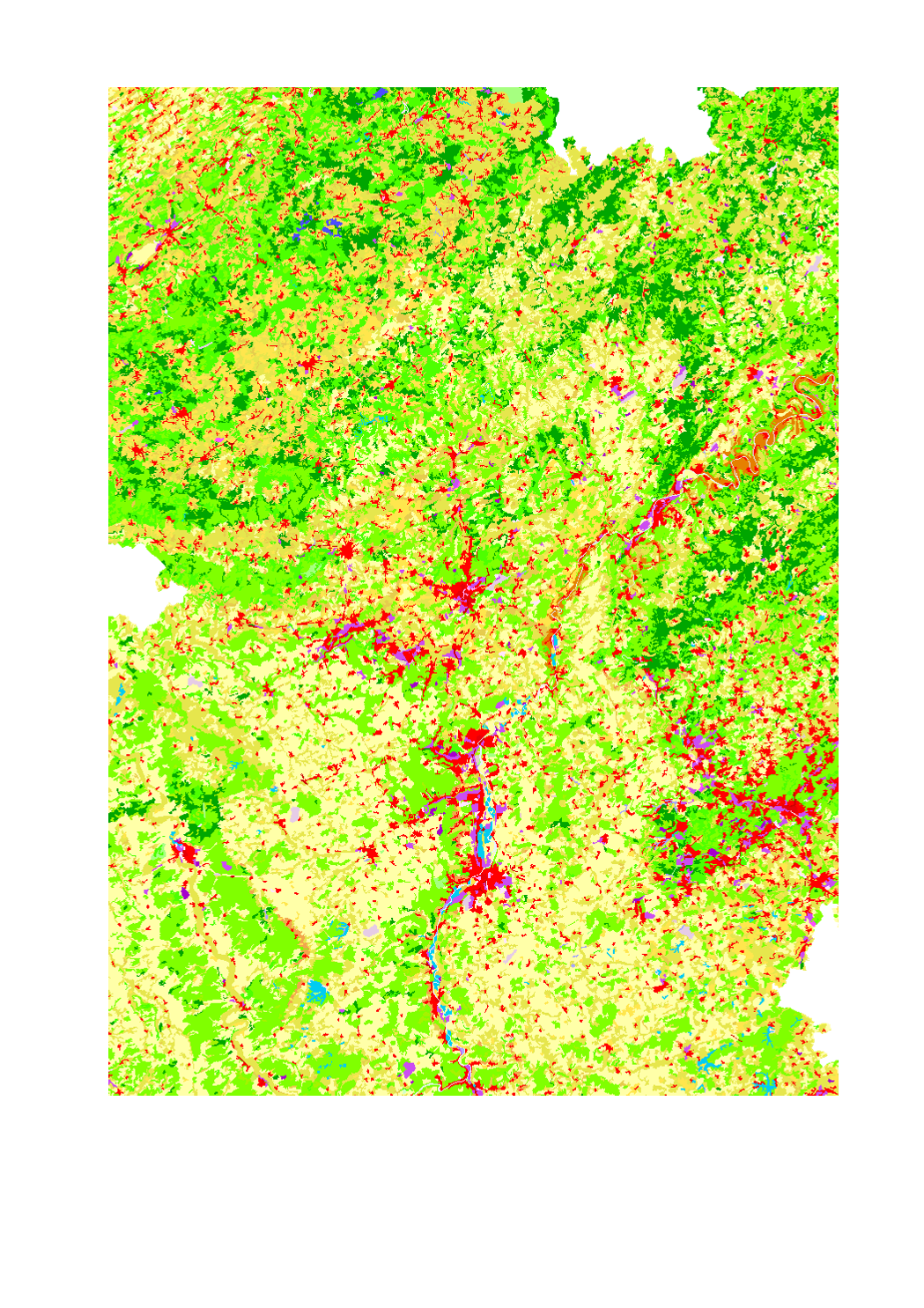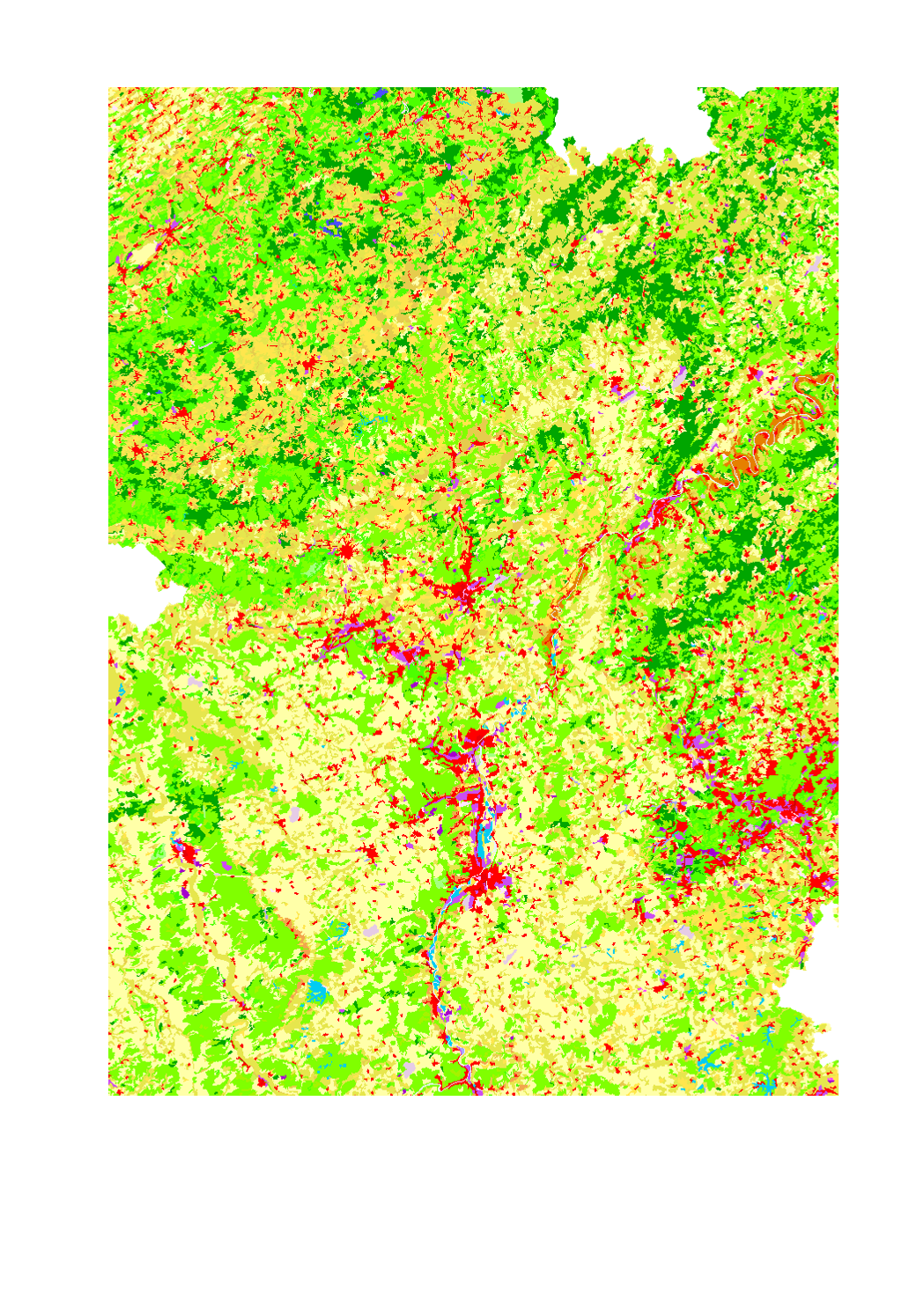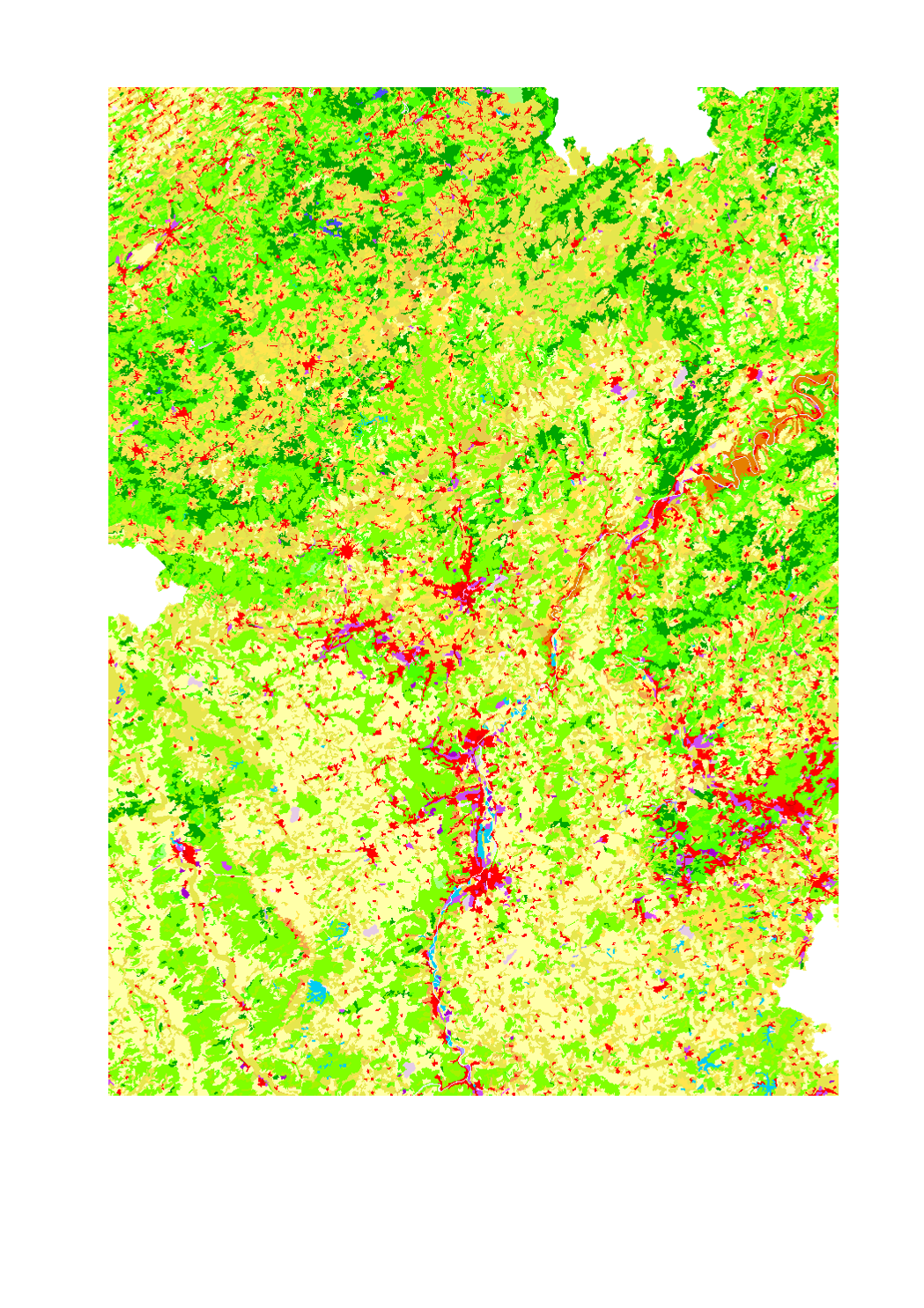Land cover
Type of resources
Available actions
Topics
Keywords
Contact for the resource
Provided by
Groups
Years
Representation types
Update frequencies
status
Scale
-
Forest types in the Greater Region 2019 - Source: INTERREG VA project Regiowood II (https://www.regiowood2.info/en) - Data sources and processing: - France/Lorraine: SPOT4-5 images acquired in 2005, RapidEye images acquired in 2010 and 2011. Data processing: ICube-SERTIT University of Strasbourg (https://sertit.unistra.fr) - Belgium: aerial image coverage from 2009, 2012 and 2016, LiDAR coverage 2014. Data processing: Gembloux Agro-Bio Tech University of Liège (https://www.gembloux.ulg.ac.be/gestion-des-ressources-forestieres) - Germany and Luxembourg: cadastral data, Landsat 8 from 2014. Data processing: Umweltfernerkundung & Geoinformatik University of Trier (https://www.fernerkundung.uni-trier.de/) - Data for the entire Greater Region from 2016: Sentinel-2 A/B. Although the classification is based on different methodologies in different regions, the final result is a consistent cross-border map. The accuracy of the classification is 88%. Please note that the date of the "Aerial Imagery" background map data may differ from the Regiowood data depending on the sub-entity of the Greater Region.
-
Forest types in the Greater Region 2021 (Lorraine: 2020) - Source: INTERREG VA project Regiowood II (https://www.regiowood2.info/en) - Data: Sentinel-2 from summer 2020 (Grand-Est), spring 2021 (Rhineland-Palatinate, Saarland, Luxembourg) and early summer 2021 (Wallonia). Although the classification is based on different methodologies in different regions, the final result is a consistent cross-border map. The accuracy of the classification is 88%. - Classifications methods: - France: SPOT4-5 images acquired in 2005 from the vegetation layer of the BD Topo (IGN). Data processing: ICube-SERTIT University of Strasbourg (https://sertit.unistra.fr) - Belgium: aerial image coverage from 2009, 2012 and 2016, LiDAR coverage 2014. Data processing: Gembloux Agro-Bio Tech University of Liège (https://www.gembloux.ulg.ac.be/gestion-des-ressources-forestieres) - Rhineland-Palatinate and Saarland: use of cadastral data (ATKIS). Data processing: Umweltfernerkundung & Geoinformatik University of Trier (https://www.uni-trier.de/universitaet/fachbereiche-faecher/fachbereich-vi/faecher/erdbeobachtung-und-klimaprozesse/umweltfernerkundung-und-geoinformatik) - Luxembourg: use of the dataset "arrondissements forestiers" from ANF. Data processing: Umweltfernerkundung & Geoinformatik University of Trier (https://www.uni-trier.de/universitaet/fachbereiche-faecher/fachbereich-vi/faecher/erdbeobachtung-und-klimaprozesse/umweltfernerkundung-und-geoinformatik) Please note that the date of the "Aerial Imagery" background map data may differ from the Regiowood data depending on the sub-entity of the Greater Region.
-

Land use in the Greater Region according to Corine Land Cover 2000 - Source: EEA - Corine Land Cover 2000 European seamless vector database
-
Forest types in the Greater Region 2016 - Source: INTERREG VA project Regiowood II (https://www.regiowood2.info/en) - Data sources and processing: - France/Lorraine: SPOT4-5 images acquired in 2005, RapidEye images acquired in 2010 and 2011. Data processing: ICube-SERTIT University of Strasbourg (https://sertit.unistra.fr) - Belgium: aerial image coverage from 2009, 2012 and 2016, LiDAR coverage 2014. Data processing: Gembloux Agro-Bio Tech University of Liège (https://www.gembloux.ulg.ac.be/gestion-des-ressources-forestieres) - Germany and Luxembourg: cadastral data, Landsat 8 from 2014. Data processing: Umweltfernerkundung & Geoinformatik University of Trier (https://www.fernerkundung.uni-trier.de/) - Data for the entire Greater Region from 2016: Sentinel-2 A/B. Although the classification is based on different methodologies in different regions, the final result is a consistent cross-border map. The accuracy of the classification is 88%. Please note that the date of the "Aerial Imagery" background map data may differ from the Regiowood data depending on the sub-entity of the Greater Region.
-

Land use in the Greater Region according to Corine Land Cover 201 - Source: European Environment Agency - Corine Land Cover (CLC) 2018 v20
-

Land use in the Greater Region according to Corine Land Cover 2012 - Source: EEA - Corine Land Cover 2012 European seamless vector database: STATUS 2012 layer (CLC12)
-

- Change in soil sealing 2(imperviousness) 2009-2015 - Territorial entities: cantons (LOR and LUX), Kreise (RLP and SL), arrondissements (WAL) - Thematic data sources: Imperviousness Density (IMD)2009 & 2015, European Environment Agency. Calculations: LISER 2018 - Geodata sources: © GeoBasis-DE / BKG 2017; IGN France 2017; NGI-Belgium 2017; ACT Luxembourg 2017. Harmonization: SIG-GR / GIS-GR 2018
-

Land use in the Greater Region according to Corine Land Cover 2006 - Source: EEA - Corine Land Cover 2006 European seamless vector database: version 15 (08/2011)
 geocatalogue.geoportail.lu
geocatalogue.geoportail.lu